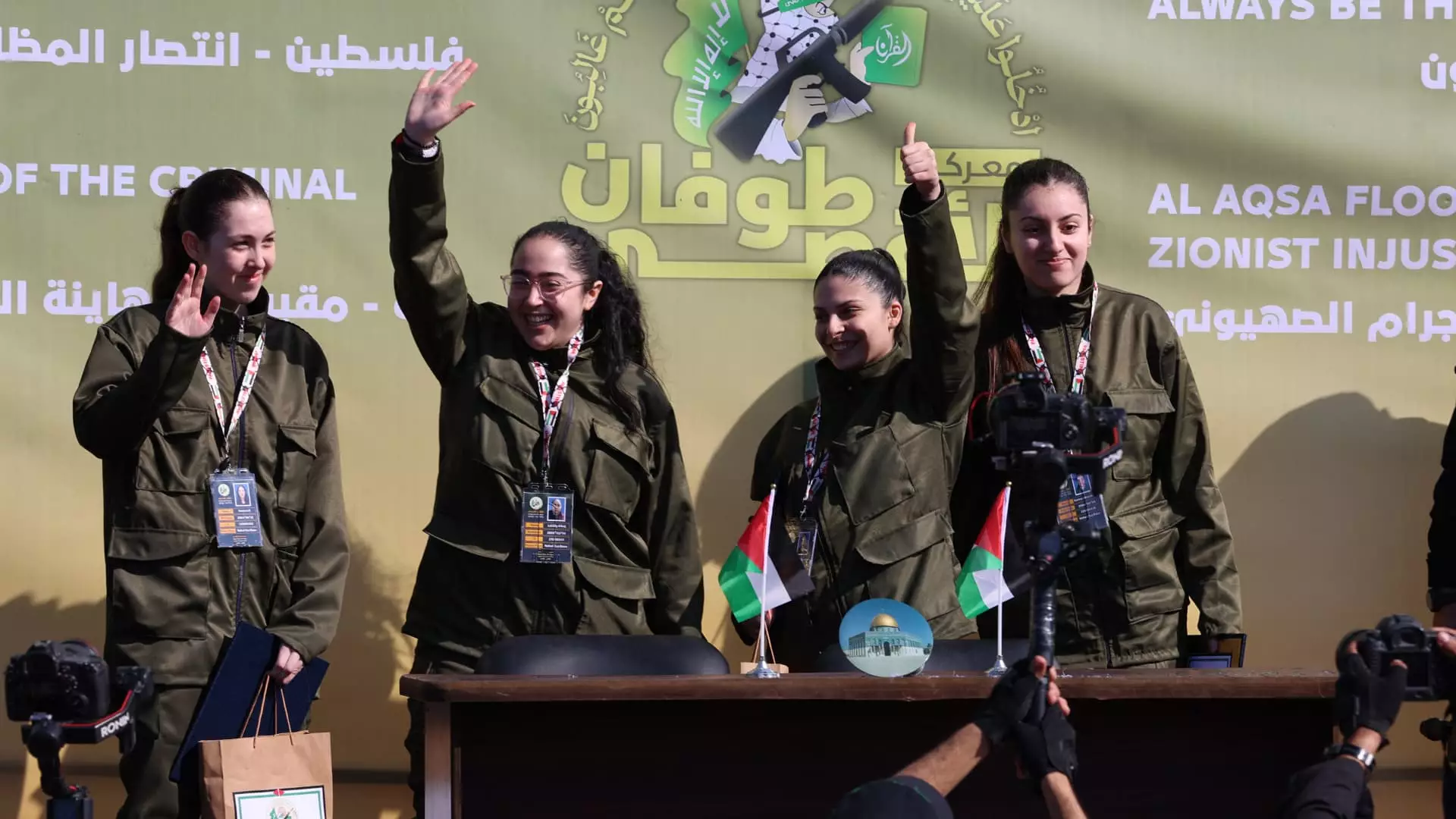In a significant turn of events in the ongoing conflict between Israel and Hamas, the militant group released four female Israeli soldiers on a recent Saturday. This exchange, which also involved the release of approximately 200 Palestinian prisoners, is part of a ceasefire agreement that aims to bring an end to over 15 months of intense conflict in the Gaza Strip. The attention surrounding this event underscores the broader implications of hostage negotiations in shaping the trajectory of peace efforts in this long-standing conflict.
The female soldiers—Karina Ariev, Daniella Gilboa, Naama Levy, and Liri Albag—were abducted during the Hamas-led assault on an Israeli observation post at the Gaza border on October 7, 2023. Their public release was marked by a ceremony in Gaza City, where they were greeted by a throng of armed Hamas supporters. The contrast between the jubilation of the Palestinians in attendance and the emotions of the soldiers’ families highlights the deeply entrenched divisions and conflicting narratives that characterize this protracted conflict.
The Emotional Reactions of Families and Communities
Reunions with their families were filled with emotions of relief and gratitude, witnessed by hundreds of Israelis who flocked to “Hostages Square” in Tel Aviv. The sight of these soldiers returning ignited celebrations among their loved ones, providing a moment of respite within a landscape ravaged by violence. However, joy was bittersweet; a civilian female hostage anticipated to be released was not, causing disappointment and raising questions regarding the reliability of the ceasefire parameters. This incident resulted in accusations of a truce violation from Israeli officials, while Hamas attributed the situation to a technical glitch.
Prime Minister Benjamin Netanyahu emphasized a strict approach, insisting that no Palestinian could return to the northern territories of Gaza until the hostage situation is entirely resolved. This underscores the precarious nature of the ceasefire, where each event could serve to both mitigate and escalate tensions. The emotional landscape in Israel, characterized by hope mingled with frustration, illustrates the substantial human cost of the war and the highs and lows experienced by those with loved ones in the clutches of conflict.
The exchange of hostages has far-reaching implications for both sides involved. Hamas has committed to releasing 200 Palestinian prisoners in conjunction with the soldier’s release, many of whom are convicted militants serving long sentences for their roles in violence against Israelis. This is the second significant hostage exchange since the ceasefire agreement was put into place in January, whereby a previous swap involved three Israeli civilians and 90 Palestinian prisoners.
The broader aspect of these negotiations points to a complex future in which both sides must reconcile their demands and concessions. Mediators, primarily Qatar and Egypt, have played crucial roles in facilitating these discussions, backed by the United States. Their involvement is emblematic of international interest in stabilizing the region and can serve as a double-edged sword—bolstering hope in some quarters while arousing skepticism in others about external parties’ motivations.
The backdrop to this tense exchange is a conflict that has left profound scars on both Israeli and Palestinian societies. Since the onset of the latest wave of violence following the October 7 Hamas attacks—which resulted in the deaths of approximately 1,200 Israelis—Israel initiated a comprehensive military response resulting in the deaths of more than 47,000 Palestinians, according to health authorities in Gaza.
These statistics point to the tremendous human cost borne by both sides, raising moral and ethical questions about the ongoing cycle of violence. Furthermore, Israeli military reports indicate that more than 400 soldiers have died, though Hamas has not disclosed the number of its own losses, leaving significant uncertainties about the overall dynamics at play.
As negotiations continue and the humanitarian situation remains dire, the challenge ahead will involve balancing immediate relief efforts with long-term strategies aimed at addressing the root causes of this longstanding conflict. Only through inclusive dialogue can both sides hope to break free from this cycle of hostility and foster a durable peace. The hostage exchange may represent a small step towards this objective, but significant obstacles remain on the path to reconciliation.

